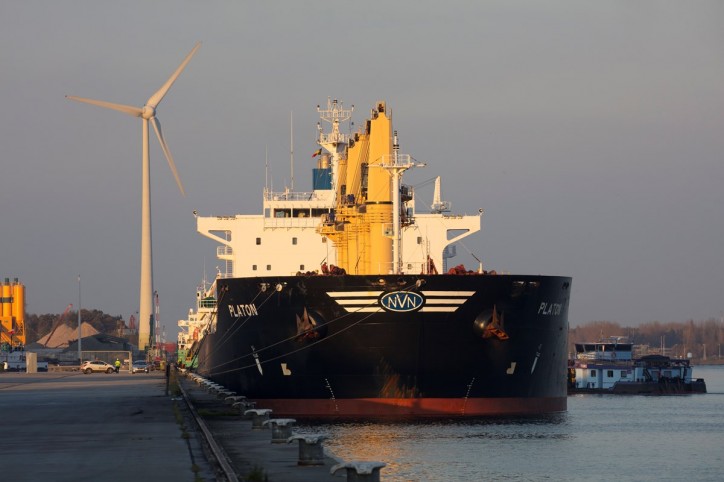With 66.6 million tonnes of seaborne cargo traffic North Sea Port is taking a firm start. The new merger port positions itself with various record figures as thé specialist in bulk and general cargo traffics.
North Sea Port’s seaborne cargo traffic for the year 2017 amounts to 66.6 million tonnes with a 71% import share and a 29% export share. If the merged cross-border port had already existed before, then this would have been the best result ever (+6.9%). The inland navigation cargo traffic is good for 56.5 million tonnes which would equally have been a record. Consequently, seagoing as well as inland navigation together experienced a record start, which can be found back in the total cargo traffic figure for seagoing and inland navigation: 123.1 million tonnes.

Specialist in bulk and general cargo
Handling bulk cargo is North Sea Port’s absolute speciality with among other goods iron ore, coal, foodstuffs, grains and fertilizers. But also with the handling of general cargo (steel, paper, wood, fruit and project cargo) North Sea Port is putting itself at the top of the European ports.
Dry bulk represents about half of the seaborne cargo traffic (47%). Liquid bulk takes up almost one third (29%). Practically one fifth of the volume is conventional general cargo (17%). The ro/ro (6%) and container traffics (2%) complete the picture.
Transatlantic and European coastal navigation
North Sea Port aims at both transatlantic navigation and at European coastal navigation. As for the division according to the continents, Europe takes up 61%. The South and North American areas of navigation represent 15% and 14% respectively. Africa takes up 5%, Asia 3% and finally Oceania 2%.
Zeeland and Ghent
In 2017, the Zeeland port area registered a seaborne cargo traffic of 34.1 million tonnes thanks to a strong second half of the year. This is with 2,7% more than in 2016 the third best result ever. The increase can especially be noticed for liquid bulk, containers and dry bulk. Inland navigation traffic ends up at 33.5 million tonnes, which is the best result ever. This brings the total cargo traffic at the highest level that was ever reached, being 67.6 million tonnes. A long shutdown of a big company did influence the traffic figures. However, the total figures do not render all activities. To these figures, the approximately 10 million tonnes of liquid bulk in the form of crude oil that enter the port by pipeline can be added – traditionally, these are not included. Moreover, Zeeland experiences a strong increase in non-tonnage related activities such as the offshore sector. As a rule, this is also not included in the traffic figures.
In 2017, with 32.5 million tonnes the Ghent port area achieved the best result ever and a second record in a row for its seaborne cargo traffic. This is an increase by no less than 11.7% mainly because of the record growth in the dry bulk traffic. The inland navigation traffic there amounts to 23 million tonnes, which is 5.1% better than in 2016 or the second best result ever. The overall seaborne and inland navigation traffic together comes at 55.5 million tonnes, or 4.5 million tonnes more than in 2016.
Granting of land
In 2017, North Sea Port granted 44.6 hectares of land. In Zeeland a total of 19.5 hectares of land was granted 11.2 hectares of which on a long lease and another 8.3 hectares were sold. In Ghent, a total of 25.1 hectares was granted. Of that surface are, 9.4 hectares were given in concession and 15.7 hectares were expansions of existing concessions.
At this moment, North Sea Port has 1,000 hectares of land available that can be granted to investors.
Added value and employment
North Sea Port represents an added value of 13.3 billion euros. 98,680 people are working in the cross-border 60 kilometers’ long port area.
Source: North Sea Port